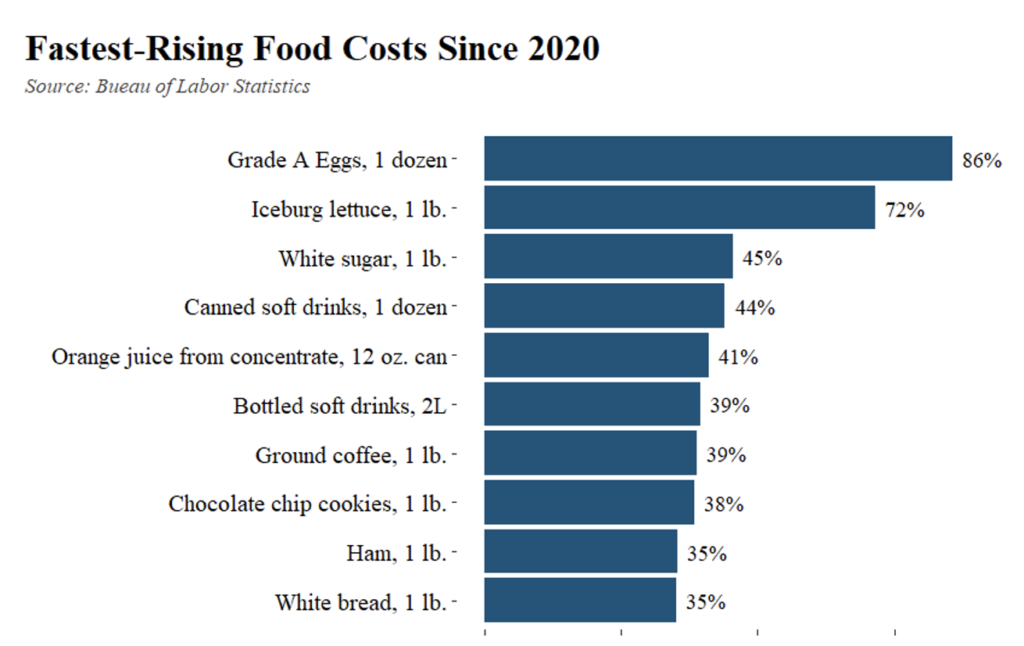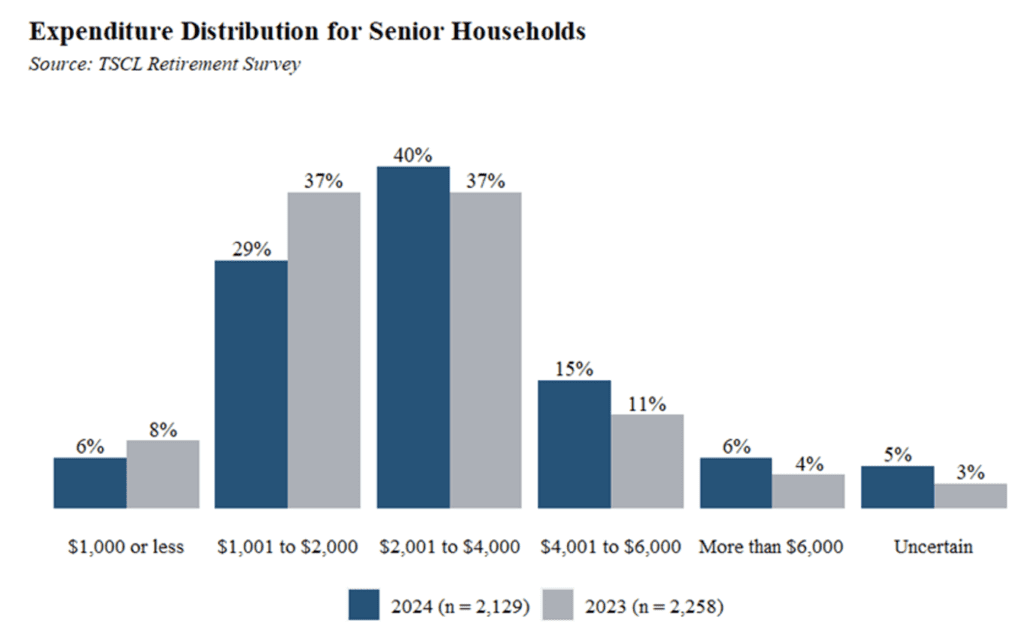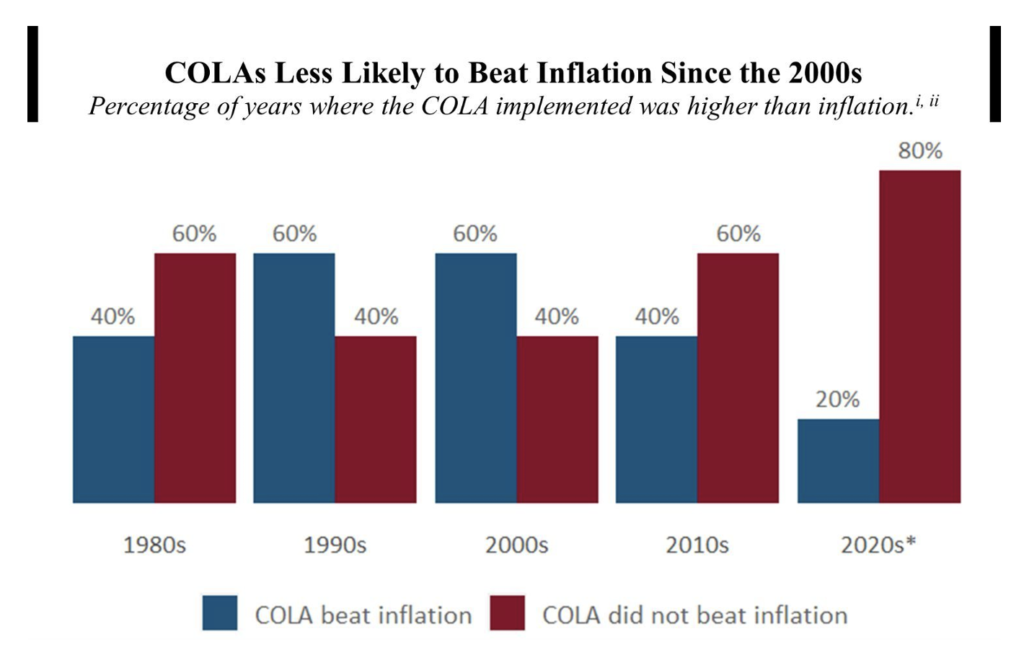Search Posts
Recent Posts
- Real Estate in RI: Seaside waterfront communities are all the rage. Who’s buying – Emilio DiSpirito June 6, 2025
- Outdoors in RI: 2A votes, Charter Yachts, active summer programs, garden tours, aquatic weeds… June 6, 2025
- All About Home Care, with two Rhode Island locations, closing after 22 years in business June 6, 2025
- GriefSPEAK: Angel wings with footprints – Mari Nardolillo Dias June 6, 2025
- Rhode Island Weather for June 6, 2025 – Jack Donnelly June 6, 2025
Categories
Subscribe!
Thanks for subscribing! Please check your email for further instructions.

Social Security 2025 COLA expected to be small increase – Herb Weiss
by Herb Weiss, contributing writer on aging issues
Stay tuned… Next year’s cost-of-living adjustment (COLA) will be announced by the Social Security Administration (SSA) in mid-October, upon the release of September’s annual inflation adjustment data. SSA’s COLA for 2025 will be reflected in beneficiary checks starting in January of that year. Like clockwork, this happens annually, although beneficiaries may see their payments occasionally arrive a few days early due to holidays or weekends.
The Senior Citizen’s League (TSCL) releases its COLA projections each month. The official COLA is determined by the Labor Bureau’s revised CPI-W data from July, August and September.
Some say SSA’s 2025 COLA is “Chump Change”
With one month left, TSCL’s latest COLA model results, released on Sept. 11, 2024, predicts that next year’s COLA will be 2.5 % based on a decline from 2.9% to 2.5% in consumer price data. While 2.5% is lower than the 3.2% received in 2024, that wouldn’t be far from the historical norm. The COLA has averaged about 2.6% over the past 20 years. It went as low as 0.0% in 2010, 2011, and 2016 and as high as 8.7% in 2023.
According to TSCL, by law, the annual inflation adjustment is based on the average inflation during July, August, and September as measured by the Consumer Price Index for Urban Wage Earners and Clerical Workers (CPI-W). The Bureau of Labor Statistics averages the CPI-W for these three months and then compares it with the same timeframe from the previous year, says the Alexandria-based nonprofit advocacy group whose mission is to protect Social Security, Medicare, and veteran or military retiree benefits.
TSCL’s COLA latest analysis findings indicates that next year’s COLA of 2.5% would raise the average monthly benefit for retired workers of $1,920 by $48 or about $564 annually. The modest increase will not enable seniors to cover increasing cost of living expenses (including food, clothing, transportation, energy, and shelter costs). “Rising grocery prices is creating food insecurity for many retirees. Feeding America estimated that 5.5 million Americans age 60 and above suffered from food insecurity in 2021, in the most recent study available on the subject, and that number is likely higher today,” note the researchers.
“Due to a higher cost of living, older Americans are using more and more of their income each month just to get by compared to a year ago. “Sixty-five percent of seniors reported monthly expenses of at least $2,000, up from 55% in 2023,” says TSCL’s COLA analysis, noting that statistical testing shows that there’s almost no chance that this gap is due to noisy survey variation. (The 2024 survey had 2,129 respondents; 2023 had 2,258 respondents.)
But low-income seniors aren’t the only ones who have seen their expenses rise, either, say the researchers, noting that more seniors are spending at least $4,000 or $6,000 per month compared to 2023, too, while fewer are able to get by on $1,000 or less. TSCL says that a rise in monthly expenses wouldn’t be much of an issue if seniors’ higher expenses were going to fun activities things, like activities with their grandchildren, or discretionary costs, like bucket-list vacations. However, this is not the case, says the Social Security advocacy group. “Nearly 80% of senior households in the 2024 survey reported that their monthly budget for essential items like food, housing, and prescription drugs had increased over the last 12 months, with 63% saying they’re worried that their income won’t be enough to cover these basic costs in the coming months,” says the analysis findings.
Over the years, TSCL, along with other aging advocacy groups including the National Committee to Protect Social Security (NCPSSM) and Social Security Works, have called for higher COLAs.
Calls for Congress to change current COLA formula.
Last March, in correspondence to Sen. Bob Casey, Jr. (D-PA), chairman of the U.S. Senate Special Committee on Aging, NCPSSM, the Washington DC based Social Security advocacy group endorsed Casey’s legislative proposal, S. 3974, entitled the “Boosting Benefits and COLAs for Seniors Act.” The proposal has been referred to the Senate Finance Committee.
Specifically, Casey’s legislative proposal, introduced March 19, 2024, would direct SSA to adjust benefits based on CPI-E rather than CPI-W, if CPI-E would result in a larger increase in benefits. The Bureau of Labor Statistics (BLS) would calculate and publish the CPI-E on a monthly basis. The Senator believes it would be the most accurate measure of the real effect of inflation on the goods and services that are purchased by America’s seniors.
In NCPSSM’s correspondence, CEO and President Max Richman strongly supported Casey’s call for requiring BLS to change the way it calculates SSA’s annual COLAs, using a CPI-E formula.
According to Richtman, SSA’s current formula for calculating COLAs is based upon the Consumer Price Index for Urban Wage Earners and Clerical Workers (CPI-W), which is a measurement by the BLS of the changes in the prices paid for a market basket of goods and services purchased by urban wage earners and clerical workers.
“The current CPI-W has fallen far short of providing needed inflation protection because it fails to adequately measure the spending patterns of seniors,” says Richtman in his endorsement of Seniors typically spend more on out-of-pocket health care costs than other Americans, and in most years, the cost of health care rises more quickly than general inflation,” he says. “We believe adoption of your bill would go a long way toward protecting those on fixed incomes from the ravages of inflation,” says Richtman.
The following organizations have endorsed S. 3974: Arc of the United States; Alliance for Retired Americans; American Federation of Government Employees; American Federation of State, County and Municipal Employees; California Alliance for Retired Americans; Justice in Aging; National Committee to Preserve Social Security and Medicare; National Education Association; National Organization of Social Security Claimants Representatives; Social Security Works; Strengthen Social Security Coalition.
While former President Donald Trump and Vice-President Kamala Harris have both pledged to protect Social Security, nether have put out a specific plan to keep America’s retirement program solvent.
According to the last Social Security Trustees report, the Social Security Old-Age and Survivors Insurance trust fund is projected to be depleted by 2033 at which point SSA will be forced to make a 21 percent across the board reduction. The nonpartisan Committee for a Responsible Federal Budget estimates that this would be a $16,500 cut in annual benefits for a typical dual-income couple retiring at the time of trust fund depletion.
When the dust settles after the upcoming presidential election, the new president must make it a priority to hammer out a bipartisan fix along with pushing for requiring BLS to use the CPI-E Formula to accurately predict the impact of inflation on America’s retirees.



___
To read more articles by Herb Weiss, go to: https://rinewstoday.com/herb-weiss/

Herb Weiss, LRI -12, is a Pawtucket-based writer who has covered aging, health care and medical issues for over 43 years. To purchase his books, Taking Charge: Collected Stories on Aging Boldly and a sequel, compiling weekly published articles, go to herbweiss.com.
